
Thurs 4 Aug - reading, Albon, Doubs source, Fort St Antoine, Comte, Besain
This morning was again cool, so we took advantage of that for Rita to do some thesis reading and me to catch up with the news and emails etc. During the morning, Rita got a call from Albon (who was home alone in Besain while Sarah was at a Yoga workshop in Lyons) and we agreed to meet up later in the day. So we spent the rest of the morning packing up at the campsite, and realising all the things that need to be checked before moving on. I had already emptied the toilet cassette yesterday, so all I needed to do today on that front was to empty the grey water tank (with my new tap). But the sole grey water grid where you empty the tank was very busy this morning, so we decided to leave anyway and empty that tank later.
Since we had spent so much time on the River Doubs over the past few years, I was interested to learn that the Source of the Doubs was just a few kilometres south of our campsite near the town on Mouthe near the Swiss border. So we decided to go there and have a look around, and meet Albon there for lunch a bit later.
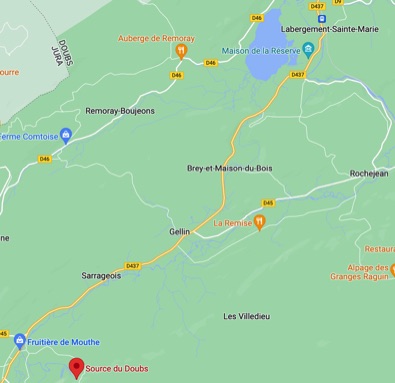
We found the parkland containing the source fairly easy, parked Vanumbra in the carpark, then walked a couple of hundred metres (past a nice camping car campground) to the Source. The Doubs emerges from a small cave in the side of a cliff, which taps into the underground aquifers. However, because of the prolonged spell of dry weather in the region, the cave opening and the rocky area immediately downstream was quite dry.
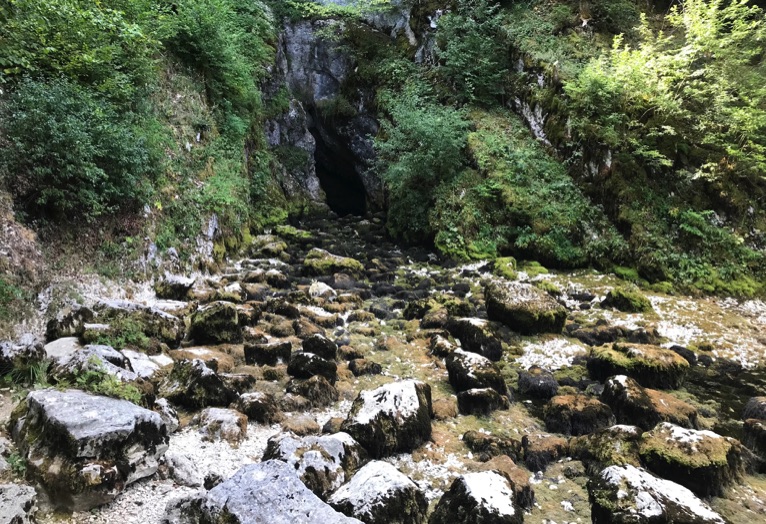
So we walked downstream from the cave, and about 50 metres down the hill we saw water seeping up through the ground and then running down into a trickling stream, which would eventually become the River Doubs
Rita found a rock near where the seeping water met the stream, and relaxed with her feet in the water, which was much, much colder than she thought it would be!
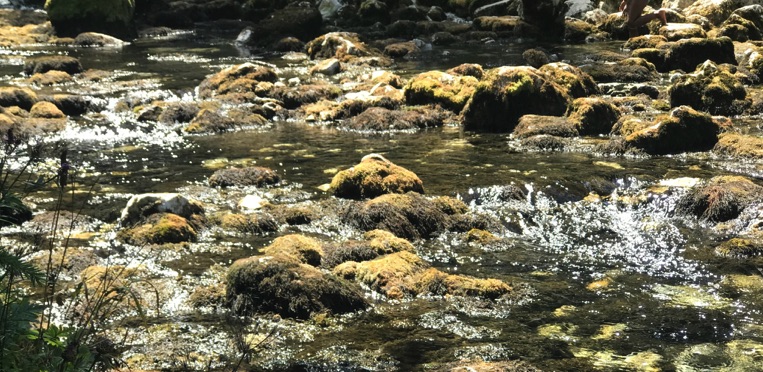
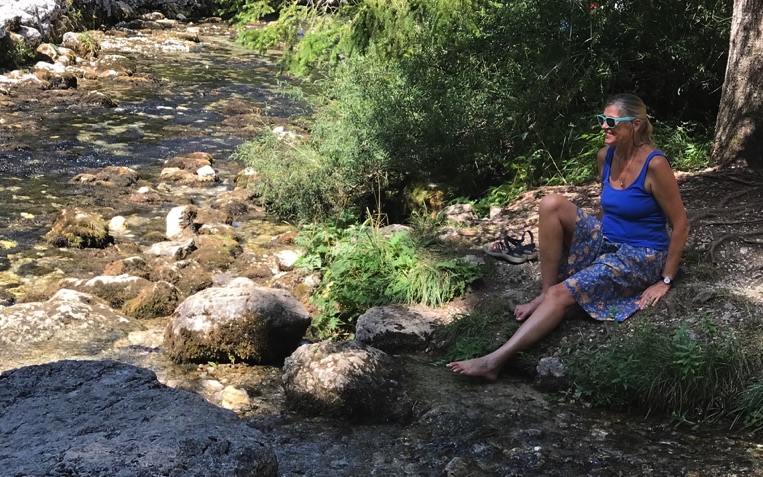
When Albon arrived, we sat in the park near the stream and had a picnic lunch. It was much cooler in the shade of the trees than it was in the rest of the parkland. After lunch, Albon said that he knew another place nearby that was also pretty cool, so we jumped back into our vehicles and followed him to Sainte Antoine, where he led us to Fort de Sainte Antoine. This former underground military fort was built at the end of the Franco-Prussian War (1879-1882) under the authority of General Séré de Rivières and the young genius captain, Joffre. It completed a defensive ensemble of 168 such forts along the eastern border of France, from Belgium down to the Mediterranean. It was named Fort Lucotte in 1887 after a general of the Revolution and the Empire. Outdated as early as 1885, due to the appearance of the torpedo shell which could burrow through the earth to reach the fort walls. It lay dormant for many years until after WW2, when it was transferred to the local Mairie for a peppercorn price of one Franc. In 1966, the fort was transformed into a Comté Cheese refining cellar by Marcel Petite, who recognised that the constant low underground temperature of 8 degrees was exactly what was needed for the curing and aging of Comté cheese. It continues to perform that role today, and we realised that a tour of the facility in that temperature was just what we needed when the outdoor temperature was in the mid-thirties.
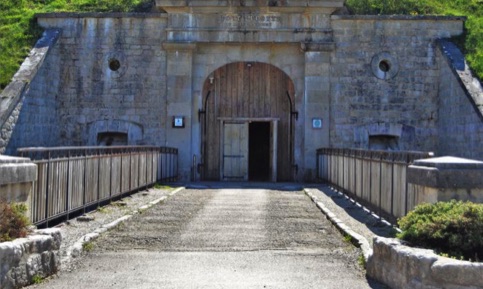
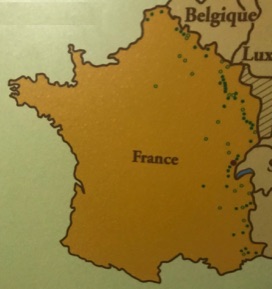
So we joined a group of about 30 people for a tour of the facility, where we learned about the third phase in the production of Comté cheese. We learned that there were four phases in the process from paddock to plate. Phase 1 was the production of the milk for the cheese. This is the role that Albon fulfills on his farm, where he has a long-term contract to provide milk for Comté, under very strict conditions to maintain the quality of the milk. Phase 2 is the conversion of the milk into the basic cheese by what are called Fruiteries in Franche-Comté. Phase 3 (done in Sainte Antoine and elsewhere) covers the curing and aging of the cheese rounds. Phase 4 is the retailing of the cheese to the public. At each stage, value is added to the product.
The tour took us through the various stages of curing, aging and testing, including testing of the cheese rounds by robots (at right below). Even though the tour was entirely in French, I managed to understand enough to appreciate the process. At one stage, Albon and I calculated that in either of the photos below, there was about one million euros worth of cheese in sight!
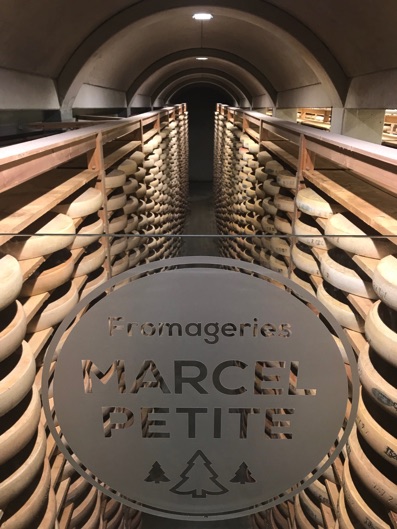
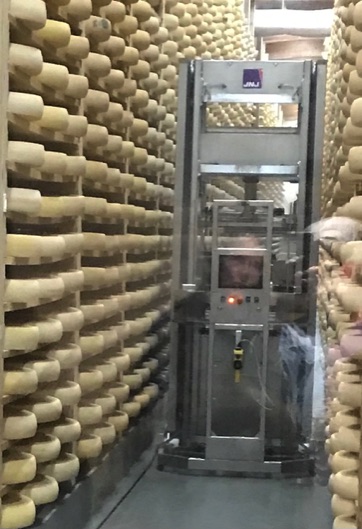
The thing I remember most about the tour was not the 8 degrees temperature, but the intense aroma/smell when we entered the curing room. It was overpowering, to such an extent that I thought it might provoke an asthma attack. Later when we were given a tasting of an 18 month Comté, one could still detect the aroma when smelling the cheese, but in much more bearable concentrations.
As we entered the carpark after the tour, I noticed an interesting companion vehicle next to Vanumbra - a Morgan sportscar. I was tempted to take the wrong vehicle. Indeed, as we left the carpark, I saw another Morgan, which gave me the feeling that perhaps Comté cheese is a delicacy of the rich!
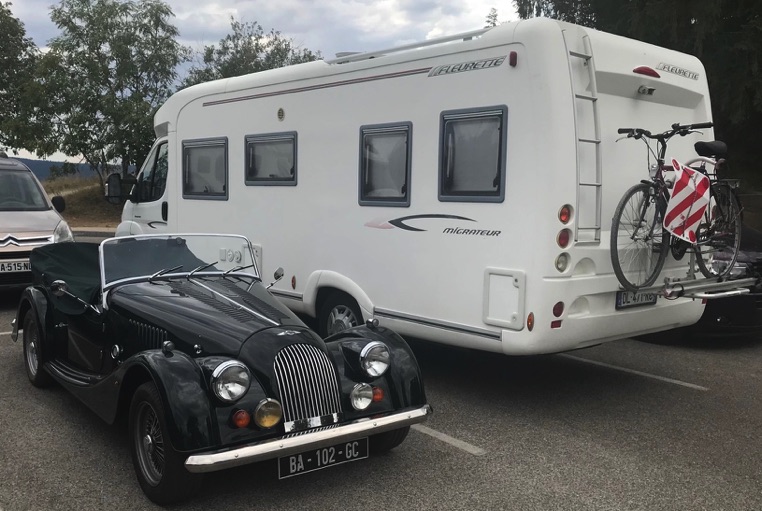
After Sainte Antoine, we followed Albon back to Besain, where Sarah was due to arrive back from Lyon. We had dinner with them, then slept in the van in front of their house overnight.